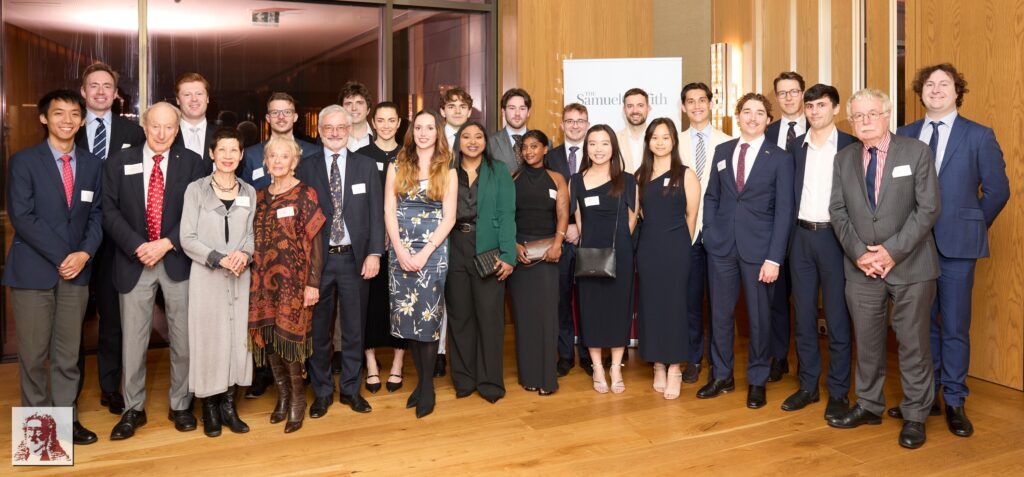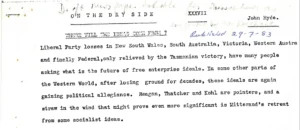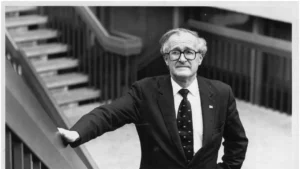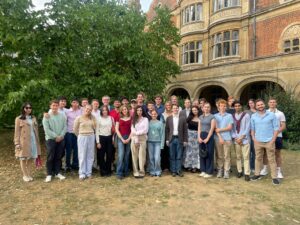A few weeks ago, I had the privilege of attending The Samuel Griffith Society conference in Perth, where leading minds in Australian law and public policy gathered alongside students and enthusiasts from across the country. The conference provided us a platform for detailed discussions on constitutional law, federalism, and the balance of power within Australia’s legal and political frameworks. Among the many presentations, a handful of speeches captured my attention, offering insights and perspectives that I found particularly worth sharing.
1. The Wisdom of Dissent: The Honourable Amanda Stoker MP

The Honourable Amanda Stoker MP delivered a stirring tribute to Justice Ian Callinan’s dissent in the landmark Work Choices case, arguing that history has ultimately proven his foresight right.
While the court’s majority dismissed the framers’ intentions as little more than a “mirage,” Callinan insisted that understanding history is essential to interpreting the Constitution. He saw the repeated rejection of proposals to expand government power as a clear signal from the people, one that courts cannot ignore.
Stoker commended Callinan’s resistance to “judicial activism” and his unwavering belief that the authority to amend the Constitution rests solely with Australians themselves. In her view, his dissent was more than a legal opinion; it was a sharp and necessary warning against concentrating power and eroding the delicate balance of federalism.
2. The Separation of Powers in a Post-Lim Era: The Honourable Justice Simon Steward AC
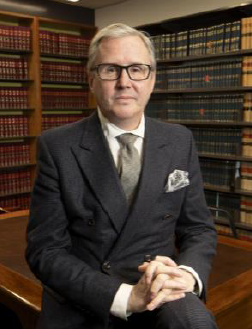
The Honourable Justice Simon Steward AC gave a compelling talk on how judicial power in Australia is changing. He explained that the Constitution’s separation of powers, meant to keep government branches in check, doesn’t enforce itself.
He pointed to cases such as Chu Kheng Lim v Minister for Immigration and Mr. Alexander v Minister for Home Affairs, where courts got involved in areas that used to be the executive’s responsibility, like curfews, electronic monitoring, and cancelling citizenship. He warned that these decisions risk moving judicial power away from its historical limits, creating something like a mini-Bill of Rights.
Steward’s main point is that separation of powers is crucial, but it needs careful oversight. Courts must balance checking the government with staying within the Constitution, carefully navigating law, precedent, and power.
3. A Lawyer’s Dilemma: Honourable Nicholas Hasluck AM, KC
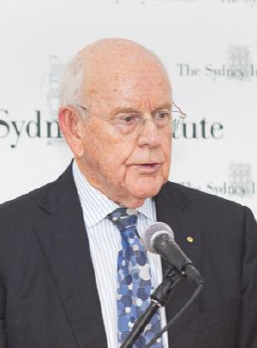
Honourable Nicholas Hasluck AM, KC examined how the rule of law is under pressure in today’s complex world. Once meant to protect people from arbitrary power, it is now questioned by ideas like critical legal theory, which suggest law can serve oppression. Public debate, he warns, often gets tangled in jargon, half-truths, and manufactured outrage, with “truth-telling” sometimes just decoration.
He illustrated this through Ian Callinan’s novel Dislocation, set in postwar Tokyo. Young Australian lawyer Bill Liston works at a war crimes tribunal, facing bias, flawed procedures, and political compromises. Liston struggles to uphold fairness and justice amid human weakness and competing interests.
Hasluck argued that fiction like Dislocation helps readers understand society, showing why clarity, integrity, and principles remain vital even when politics and self-interest cloud judgment.
4. Politics and Power: Mia Schlicht and Henry Davis

Mia Schlicht and Henry Davis looked at how Australia give unelected bureaucrats the power to make important environmental decisions, leaving ministers and public oversight out.
This change, similar to debates around the Tasmanian Dams case, can create unaccountable decisions, especially in resource-rich areas like Western Australia. The “Nature Positive Plan,” inspired by the High Ambition Coalition for Nature and Environment, marks Australia’s bold commitment to global environmental goals. It forces international targets directly into national law, turning lofty promises into mandated action and, in doing so, it binds local decisions to a global agenda, risking policy driven more by international views than by Australia’s unique environmental needs.
Henry Davis also highlighted how litigation funding and class actions can influence policy, sometimes bypassing normal democratic processes and how foreign-funded legal cases in energy and mining could threaten Australia’s industries and sovereignty.
5. The Forgotten Architect: Honourable Justice John Snaden
Honourable Justice John Snaden turned the spotlight onto Andrew Inglis Clark, whom he called the other architect of Chapter III of the Constitution. Opening with references to Seinfeld and The Simpsons, he showed how crucial contributors can fade into the background. Clark, a Tasmanian lawyer, politician, and later judge, was deeply immersed in American constitutional thinking. In 1891, he prepared a draft that gave lasting shape to Chapter III.
John Snaden highlighted that Clark saw courts as the safeguard against government overreach. Clark himself wrote that “the supremacy of the judiciary finds its ultimate logical foundation in the conception of the supremacy of law.” Though overshadowed by Barton, Griffith, and Deakin, Honourable Justice Snaden argued that Clark’s influence is undeniable. Without him, the constitutional protection of judicial independence may have looked very different.
Conclusion
The Samuel Griffith Society conference offered me more than just formal presentations, it gave me the opportunity to engage directly with speakers, students, and professionals who had travelled here, to Perth from across the country.
During morning teas, dinners, and between sessions, I had conversations that provided valuable insights and context for a non-law student like me, making it easier to follow some of the deeper and more complex ideas the speakers discussed from time to time. The conference proved to be a truly rewarding experience, offering many interesting takeaways to reflect on.
I am grateful to Mannkal and SGS for the chance to attend and be part of this vibrant community.

